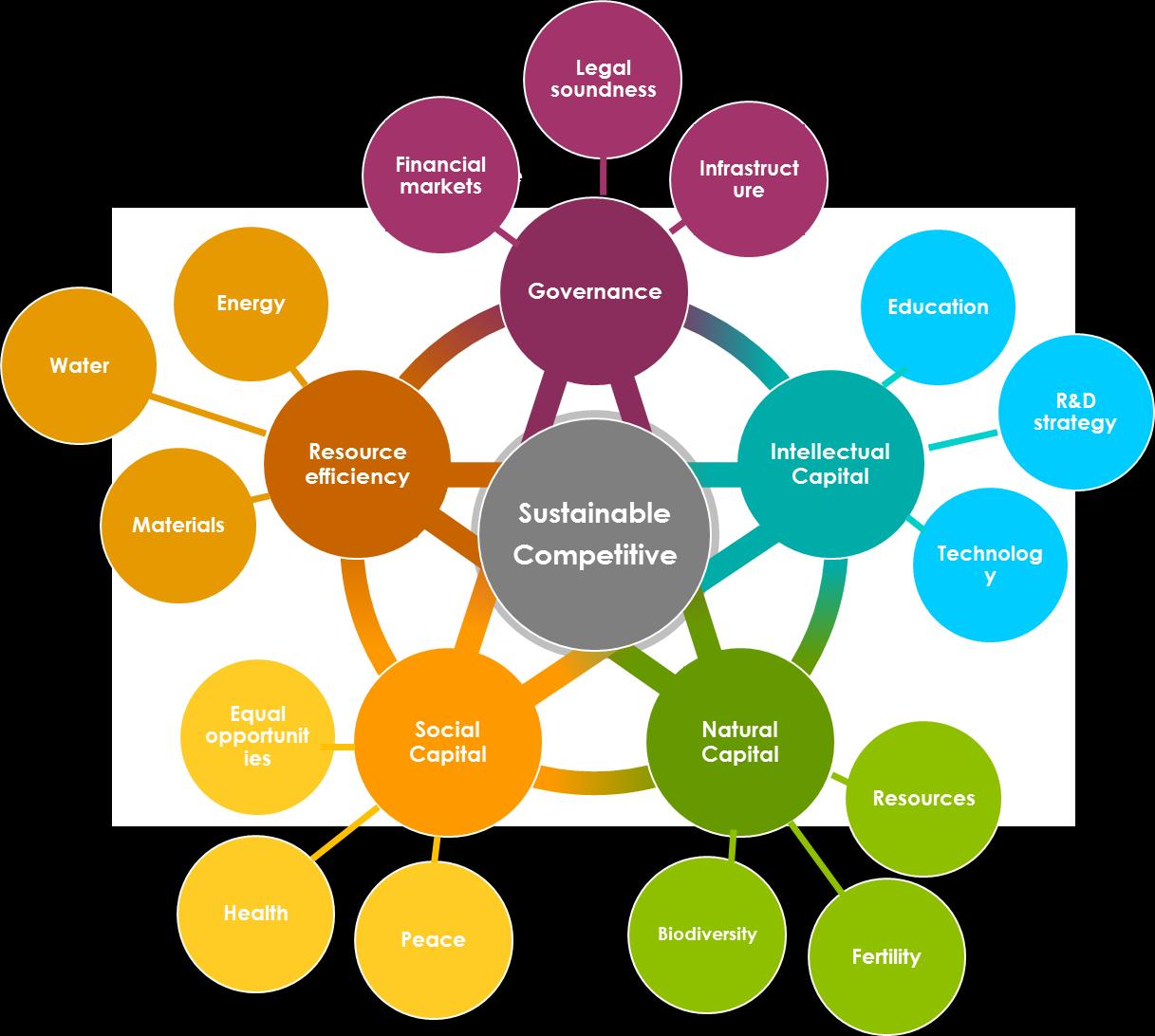
3 minute read
7.1 ACHIEVING SUSTAINABLE COMPETITIVENESS
The GSCI evaluates the competitiveness of nation-economies. But what actually is competitiveness?
Policy and investment decision in all pillars of competitiveness are inter-acting and affect the competitiveness of a country:
Advertisement
The availability and state of natural capital does not affect short-term economic development or recovery – unless the capital in question is oil or other commodities in demand on the global market. Exploitation of natural resources (natural capital) can bring short-term economic benefits, but is often accompanied by diminishing the basis of future development (e.g. in the case of forest exploitation) Resource intensity is cost. The higher the resource efficiency, the higher the competitiveness of an economy. However, resource intensity is not directly linked to short-term economic development. While resource usage is increasing with initial development, efficiency tends to increase with higher development and investments. However, economic decline (as has occurred in Greece since 2010), leads to lower resource consumption. Social capital is negatively affected by economic decline. A declining economy leads to fewer financial resources available for social capital aspects (health, community development, integration, …), and leads to higher criminality as well as individual despair – all of which negatively affects the competitiveness of a nation-economy on the long term. There seems to be a fairly direct connection of Intellectual capital availability and positive/negative economic development. All countries that have cut investments (including, but not restricted to, innovation, R&D and education), have seen a slower recovery or even further decline since the financial crisis – and vice versa. While it may look sensible at first glance to cut expenditure to reduce deficits, cuts do not work because they also cut the required base to kick-start growth. Cutting investments is unsustainable competitive, i.e. not sustainable competitive. Sustainable competitiveness means: analysing the likely outcome of measurements before they are implemented – i.e. calculating not only the cuts, but also the cost of cuts. A majority of policy makers these days seem to be blind to the long-term cost of cuts and benefits of investments. They do not look ahead. The analysis of individual indicators suggests a fairly straightforward connection between the Governance framework provided to the economy: countries who cut investments (infrastructure, general investments), countries with a large (uncontrolled) domestic financial investment markets, and a low industrial base have all declined more and recovered slower than countries with higher investments, smaller domestic financial markets and a better industrial base. It also seems straightforward that a steep increase of financial market size in short term seems to be the indication of an imminent burst of a bubble.
In a sustainable efficient entity, powers are balanced. Imbalance in power between individuals, groups, and entities always lead to lower efficiency over time. Low efficiency means higher overall cost, less benefits. What might appear competitive now (e.g. the exploitation of natural non-renewable resources), but is not into the future, is not competitive. Competitiveness that is not sustainable is not competitive.
In a sustainable entity, the economy does not run against nature and/or communities/society. All dimensions of an entity are all running in parallel in winwin interactions. The fundamentals hat make an economy, a society, and the natural environment in which both of the above operate/live in, are balanced interacting:
T h e S u s t a i n a b l e C om p e t i t i v e n es s F r a m e w o r k :
Sustainable competitiveness only requires two fundamentals as its base:
Equal opportunities, everywhere Decision-making based on science and sustainable cost-benefit analysis that lead to low-cost, high-benefit solutions (LCHBs)









